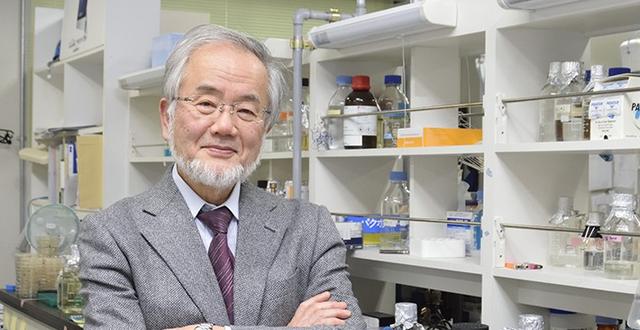This is Scientific American — 60-Second Science. I'm Steve Mirsky.
Got a minute?
The 2016 Nobel Prize in Physiology or Medicine goes to Yoshinori Ohsumi of Japan for his discoveries of mechanisms of what's known as autophagy. Break the word down and you get auto and phagy: from the Greek for self, auto, and eating, phagein. So, self-eating. Autophagy refers to a process in cells whereby they destroy themselves and send the parts out for recycling. Cells do this by enclosing their contents in tiny sacks, called vesicles. Those vesicles then get transported to an organelle within the cell called the lysosome. Where the sacks get degraded and the contents are made available for reuse.
Autophagy had been observed a half-century before Ohsumi's work in the 1990's while at the University of Tokyo. But it was his research that made clear its fundamental importance. He did that work with baker's yeast. One way he made his discoveries was to interfere with the process and thus see vesicles involved in autophagy start to build up—this action proved that yeast cells performed autophagy. He went on to identify 15 genes crucial for the process.

Need quick fuel for energy? Autophagy makes that fuel available fast. Need raw materials for maintenance in other cells? Autophagy gets those materials into the system so the body can respond to starvation and other stresses. Infected? Autophagy plays a part in capturing and killing bacteria and viruses. It clears out damaged proteins and organelles, thus helping to fight the effects of aging. At the other end of the life cycle, autophagy is involved in the development of embryos. It's truly a fundamental process.
Ohsumi is 71 years old. He's currently an emeritus professor at the Tokyo Institute of Technology. The Nobel Prize comes with a monetary award of about $1.2 million.
Thanks for the minute for Scientific American — 60-Second Science Science. I'm Steve Mirsky.













